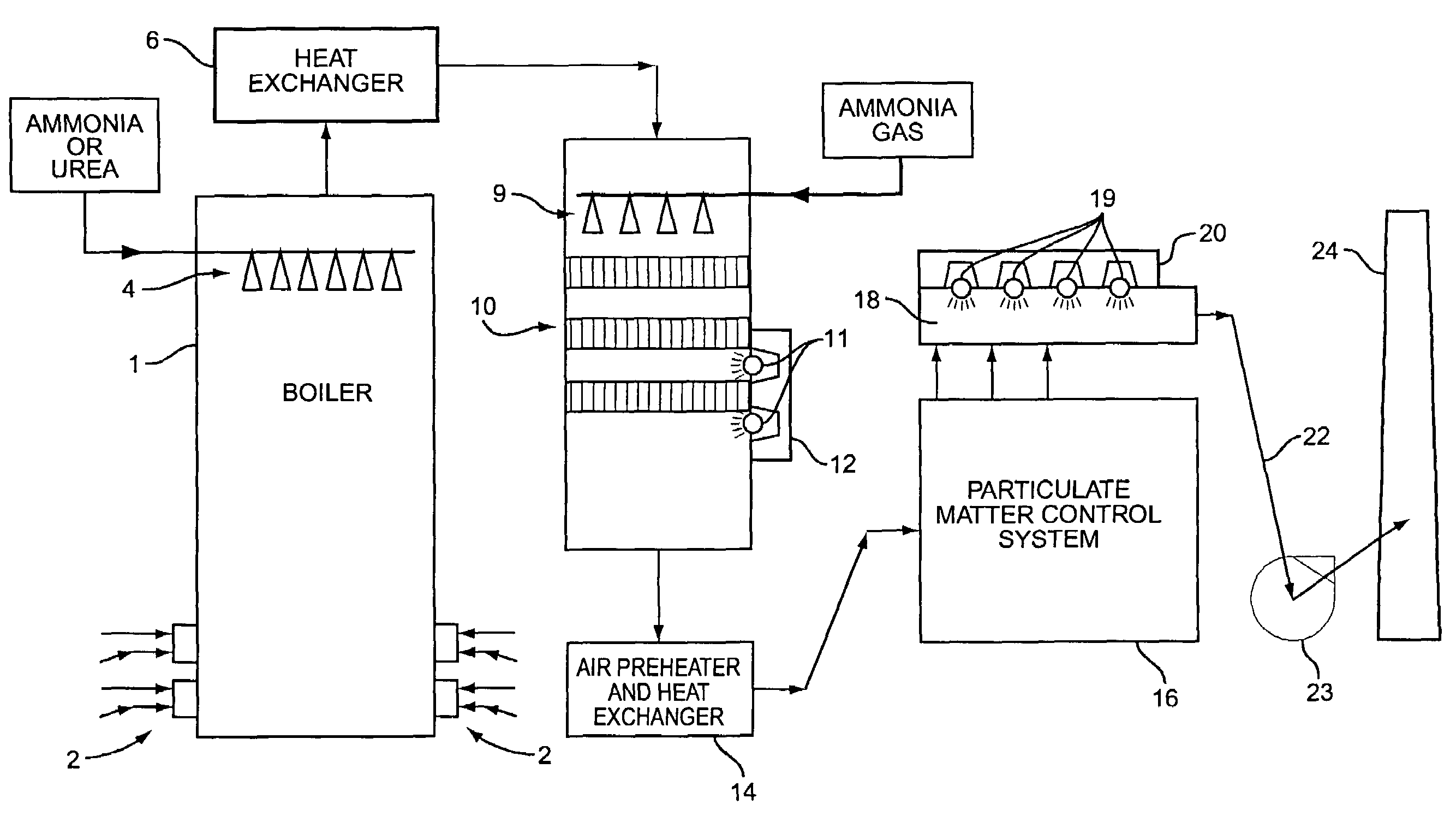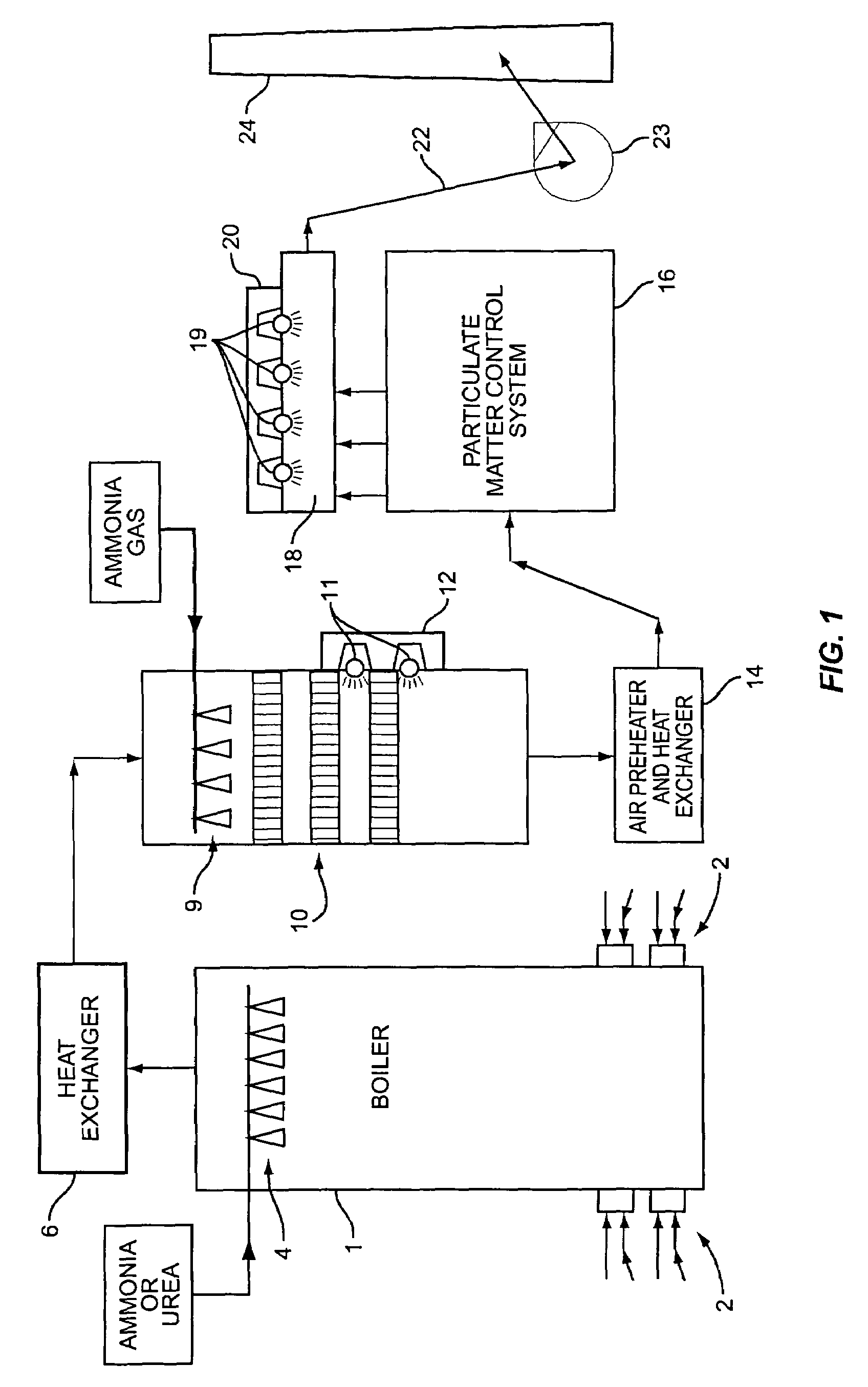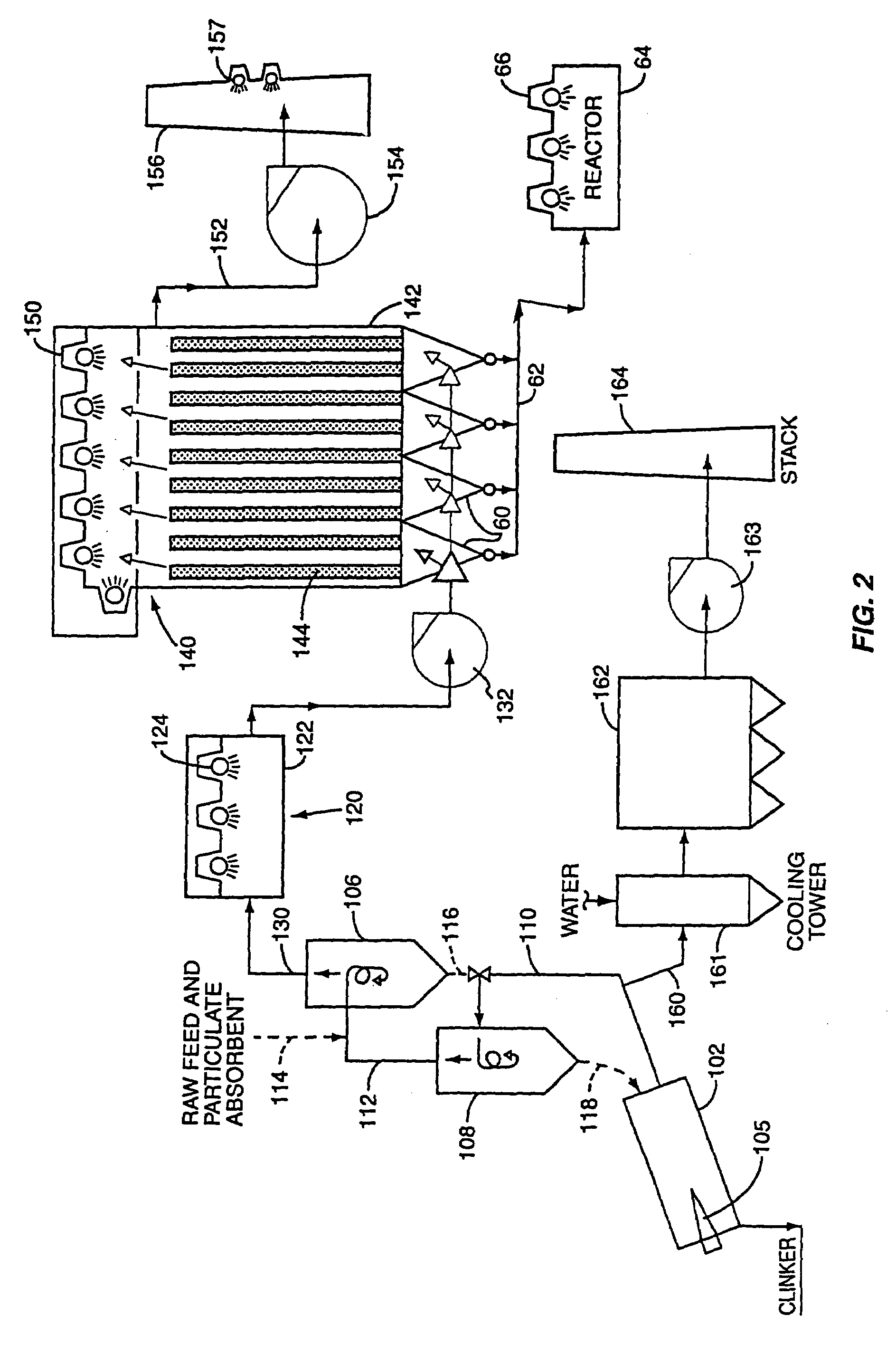Method of photochemically removing ammonia from gas streams
a technology of ammonia gas and photochemical removal, which is applied in the direction of dispersed particle separation, chemistry apparatus and processes, and separation processes, etc., can solve the problem that the ammonia and urea reagent proportion fails to react, reduces the nox control efficiency of the scr system, and the ammonia control techniques available are not well suited for the control of ammonia gas emissions from no/sub>x/sub>control systems. , to achieve the effect o
- Summary
- Abstract
- Description
- Claims
- Application Information
AI Technical Summary
Benefits of technology
Problems solved by technology
Method used
Image
Examples
Embodiment Construction
[0036]The ammonia destruction process is applicable to a number of industrial processes, such as coal, oil, and natural gas-fired boilers, wood-fired boilers, waste-fired incinerators, and portland cement plants. In the case of cement plants, the present invention entails irradiating the effluent gas stream that passes from a pyroprocessing system of the cement plant. In this regard, the gas streams are treated in Stage I and Stage II controls with nonphotocatalyzed direct photolysis using irradiated UV light in the spectral range of 230 to 370 nanometers. Stage I control occurs in a particulate matter-laden gas stream located close to the location of ammonia gas generation in the industrial process stream and is intended to protect downstream equipment from corrosive and sticky ammonium compounds. Stage II control is performed in a gas stream that has been treated in a high efficiency particulate matter control system to reduce the particulate matter concentrations by a factor of 9...
PUM
| Property | Measurement | Unit |
|---|---|---|
| Fraction | aaaaa | aaaaa |
| Fraction | aaaaa | aaaaa |
| Nanoscale particle size | aaaaa | aaaaa |
Abstract
Description
Claims
Application Information
 Login to View More
Login to View More - R&D
- Intellectual Property
- Life Sciences
- Materials
- Tech Scout
- Unparalleled Data Quality
- Higher Quality Content
- 60% Fewer Hallucinations
Browse by: Latest US Patents, China's latest patents, Technical Efficacy Thesaurus, Application Domain, Technology Topic, Popular Technical Reports.
© 2025 PatSnap. All rights reserved.Legal|Privacy policy|Modern Slavery Act Transparency Statement|Sitemap|About US| Contact US: help@patsnap.com



